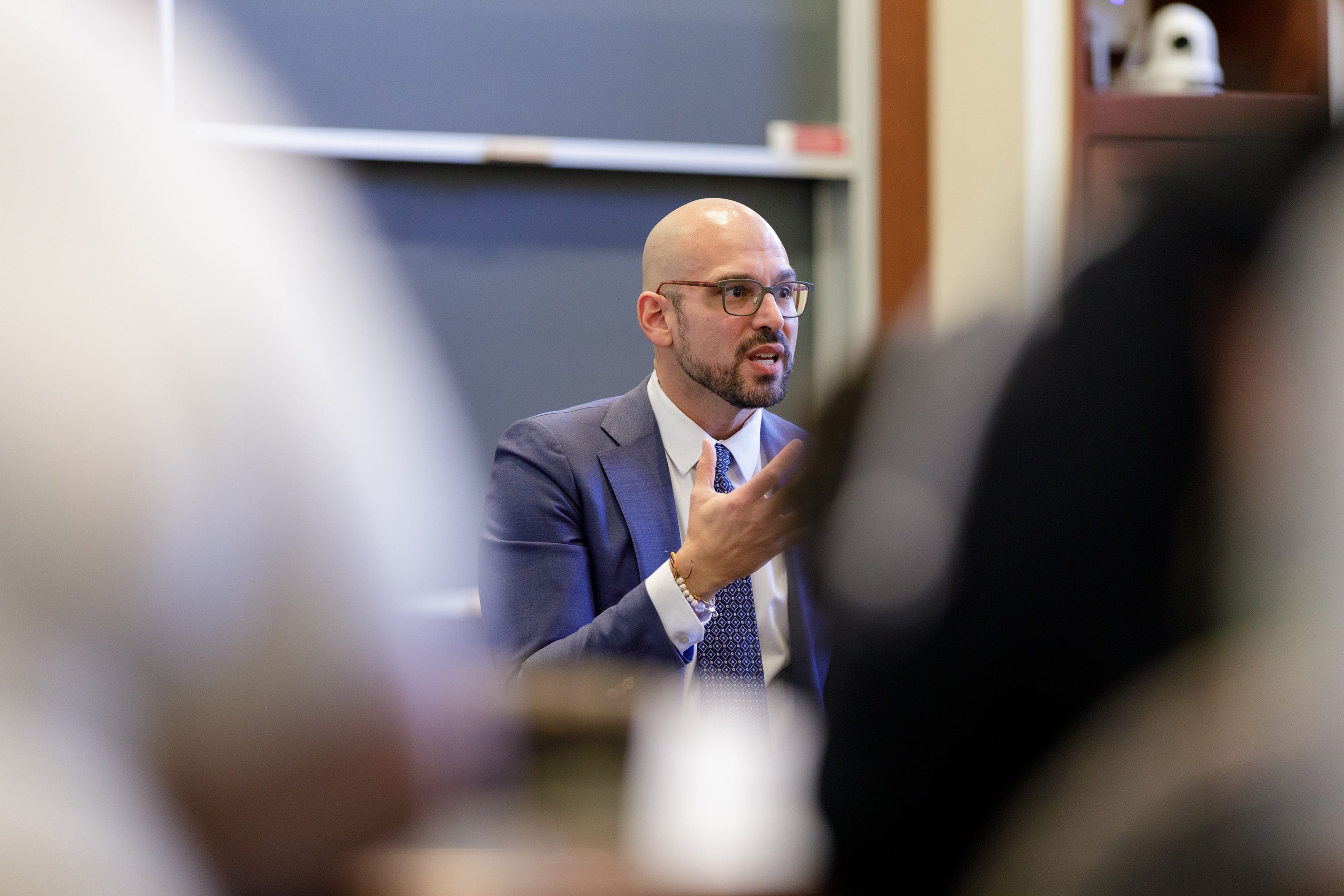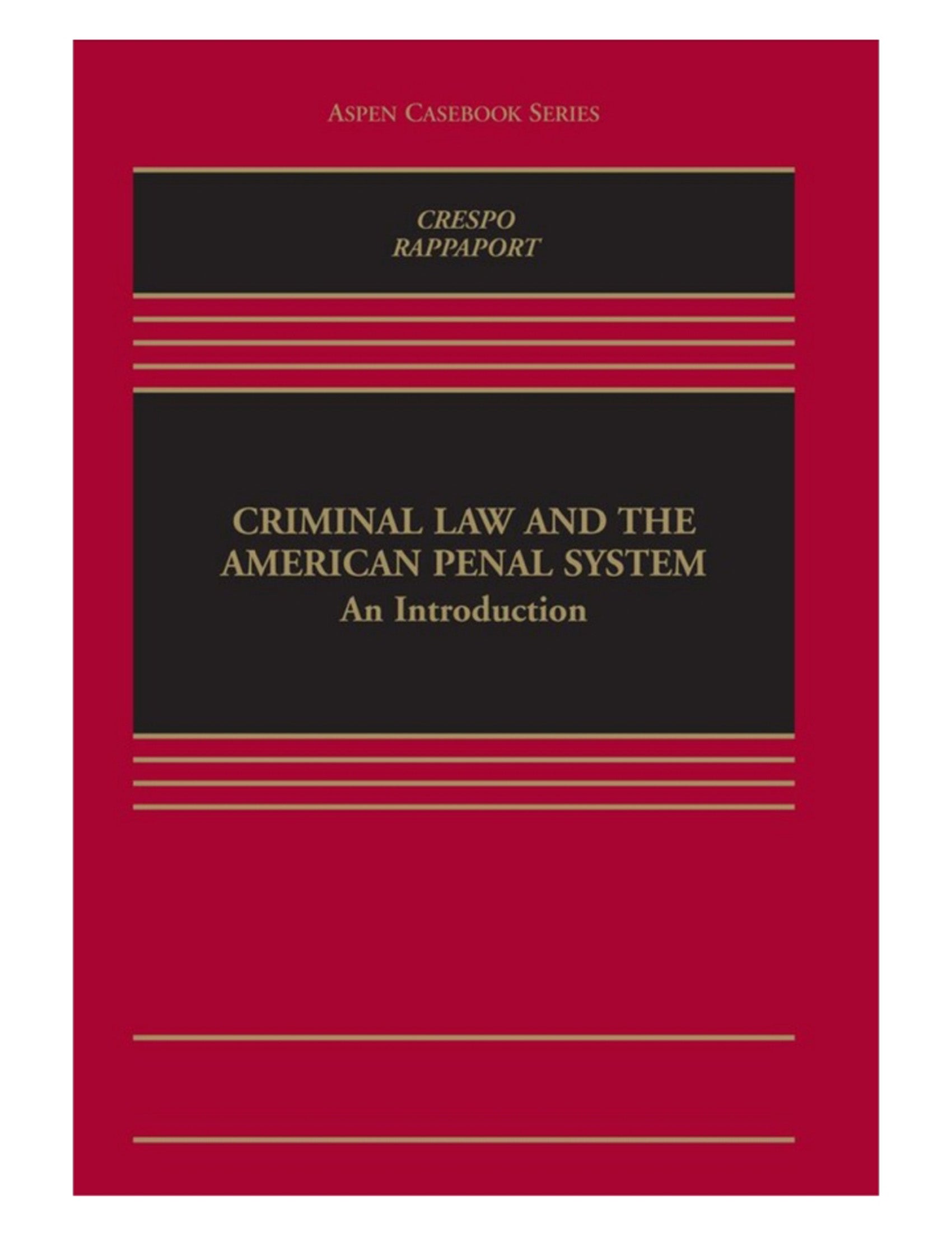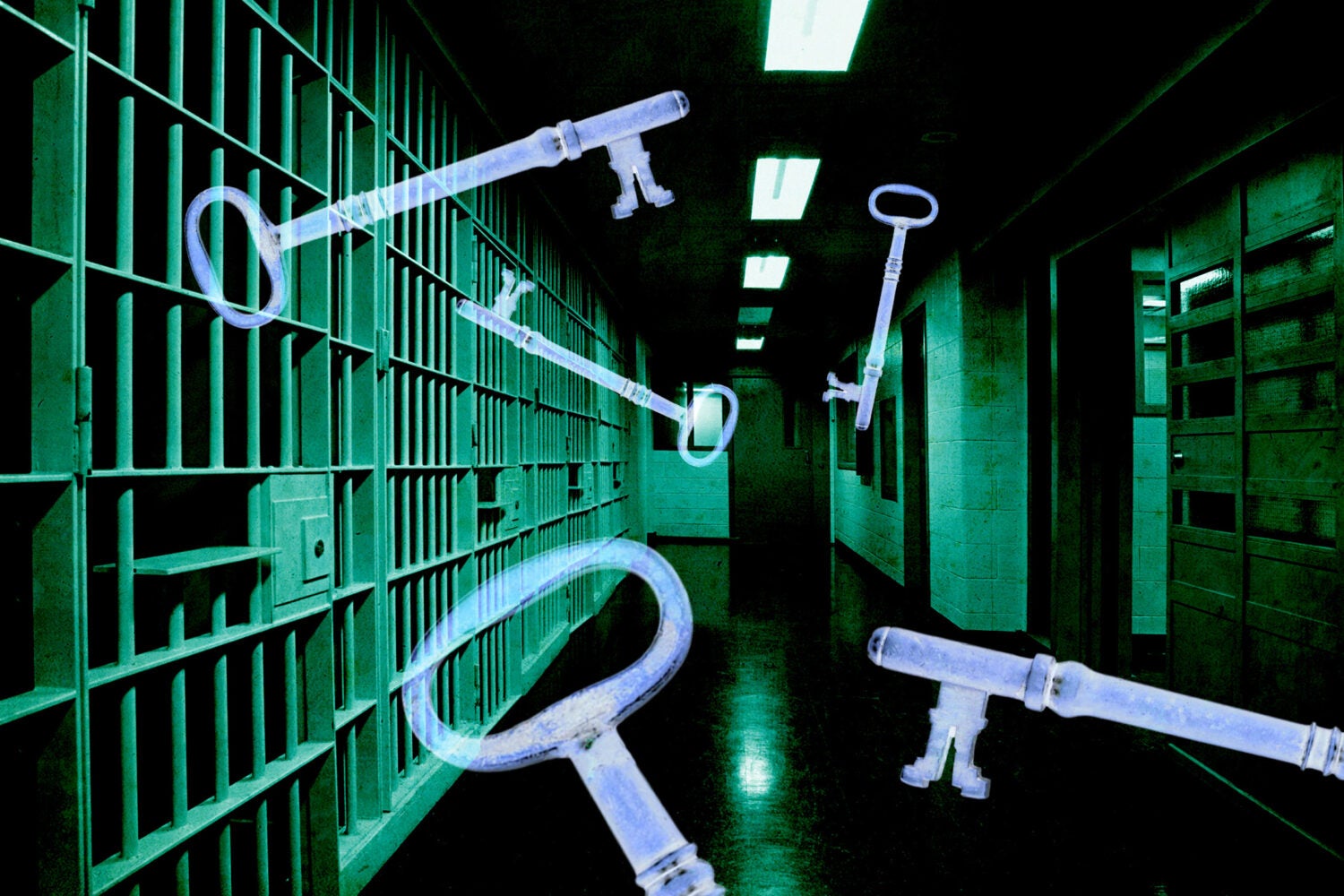There is something missing in the major criminal law casebooks used by thousands of law students across the United States — something huge, says Andrew Manuel Crespo ’08, the Morris Wasserstein Public Interest Professor of Law at Harvard.
That glaring omission can be summed up in two words: mass incarceration. While a public defender in Washington, D.C., Crespo worked for years on the penal system’s front lines, representing some of the 10 million people sent to jails and prisons across the country each year. Like most of those individuals, his clients were all poor, and were overwhelmingly people of color. To Crespo, these were the defining features of a penal system he saw up close, every day.
But when he returned to Harvard a decade ago to start teaching criminal law to first-year students, he quickly became frustrated with the course’s traditional pedagogy.
“The traditional criminal law class is just not built to be a class about mass incarceration,” Crespo says, despite his belief that “mass incarceration and the related challenges and issues regarding policing in the United States are the central issues for this field of study.”
Nor, he says, was he alone in his frustration. His students wanted their foundational first-year class to focus on these essential themes as well.

“For the 10 years that I’ve been teaching, students have come to this class expecting it to be about mass incarceration and about policing. This is, after all, the first generation in history that has come to law school living through not one, but two, major national protests regarding precisely these issues,” Crespo says, referring to the mass demonstrations following the police killings of Michael Brown in 2014 and George Floyd in 2020.
Now, as a leading scholar of American criminal law, Crespo is working to redefine how the field is taught. A new casebook written by Crespo and John Rappaport ’06 of the University of Chicago Law School, “Criminal Law and the American Penal System,” offers the first major conceptual overhaul of the field’s pedagogical structure in over half a century.

Part of the problem, Crespo says, is that several of the most frequently used criminal law texts published their first editions in the late 1960s or early ’70s — before the war on drugs, before the widespread use of tough-on-crime strategies like broken windows policing or three strikes laws, and before the prevalence of mandatory minimum sentencing and other policies that have caused federal and state prison populations to explode over the last half-century. Those leading casebooks have been updated since then, but their underlying frameworks have never fully reckoned with the changed reality, says Crespo, who is also the executive faculty director of the Institute to End Mass Incarceration at Harvard.
Crespo and Rappaport’s new approach aims to change that, reframing the required first-year class as a course about the role law and lawyers played in creating mass incarceration, and the role they might play in ending it. The book is designed to be a resource for students and scholars alike, offering a fresh conceptual framework that recasts familiar doctrinal topics in new lights, while thoroughly incorporating careful scholarly research across numerous fields of study — including history, philosophy, sociology, economics, and criminology. The end result is a book that contextualizes the field’s fundamental legal issues by connecting them to the policies, histories, and social systems that produced the world’s largest system of incarceration.
To start, the authors ground the book by asking future lawyers to consider a question most criminal law classes never ask: Why does crime happen? Distilling and incorporating a century’s worth of sociological literature, Crespo and Rappaport encourage students to see that crime cannot be divorced from its social, economic, and political contexts. Building on that insight, they then foreground the doctrine of excuse, which sometimes exculpates people who harm others under circumstances that make it extremely difficult to avoid offending, like insanity. Beyond age or mental illness, they ask, are there other things — like poverty, lack of access to education, or other ingrained social inequities — that similarly drive criminal behavior, and that might thus be grounds for reducing a person’s culpability? “We want students to grapple at the outset with questions about who is eligible to be punished, and to examine how the law deals with crime-causing social conditions outside an individual’s control,” Crespo says.
From this foundation, the book then teaches students the core doctrinal building blocks of criminal law through the lens of three core offenses — homicide, sexual assault, and theft. In these chapters, Crespo says, “The book draws a strong connection between law and the social and sociological forces and histories and power structures that both shape criminal law and are, in turn, shaped by criminal law, most especially along dimensions of race, sex, and class.”
The emphasis on class comes through in the book’s section on theft, a subject that often gets less attention in other casebooks. “Our chapter on economic crimes juxtaposes shoplifting and other crimes of poverty with thefts at the other end of the socioeconomic spectrum, such as white-collar crimes,” Crespo says. “Teaching two different types of theft at the same time — theft by people at the bottom of the socioeconomic ladder and financially oriented crime at the top — helps show how differently these two groups of people are treated by the system in practice.”
“It’s really hard to to figure out a way forward … we don’t want to increase crime and we don’t want to increase the harm of crimes.”
The book concludes by centering on the work of the late Harvard Law School Professor William J. Stuntz, whose seminal scholarship emphasized the link between substantive criminal law — that is, the laws as they are written — and the power of those who enforce them, including prosecutors and police officers. Crespo and Rappaport emphasize this connection by amplifying crimes of possession — including of weapons and drugs — in order to demonstrate how laws can be used or abused by law enforcement actors, Crespo says.
They devote the final third of the book to a study of how substantive criminal law shapes essential law enforcement tactics, like prosecutorial plea bargaining and broken windows policing, and examine the related interaction between substantive criminal law and constitutional jurisprudence on these topics. The key, Crespo says, is for students to understand that “[i]f you make criminal law broader or more powerful or more severe, police officers have more power to stop people on the street, and prosecutors have more power to determine the outcomes of cases through plea bargains.”
The book, which has been more than five years in the making, was a joint passion project for Crespo and Rappaport, two longtime friends and colleagues who, Crespo says, share a “foundational sense of what mass incarceration is and what’s wrong with it,” even as they each bring their own perspectives and expertise to the project.
Although the casebook challenges students to think critically about the law, it does not offer easy answers, nor does it shy away from the ubiquity of crime and violence in America.
“The same communities that are most impacted by mass incarceration and by policing are also most impacted by crime,” Crespo says. “This is not surprising,” he adds, “because these are two sides of the same set of problems,” given that these communities often suffer from historic and ongoing disinvestment, racism, and poverty that spur harmful behavior, inviting a vicious cycle when the primary social policy response is more prison.
The book offers ideas for paths forward, but Rappaport says reasonable people will not always agree on which approaches are best. That is partly why he and Crespo took care to include in the text a diverse array of expert voices, including some unexpected ones.
“We wanted the book to reflect the leading ideas in the field of criminal law, and that includes, of course, people who disagree with one another,” Rappaport says. “At the same time, we wanted to expose students to voices that are often overlooked, and that includes the voices of people who are incarcerated and activists who are working on the ground to end mass incarceration.”
Crespo and Rappaport hope that their casebook encourages students and academics alike to grapple with difficult and sometimes uncomfortable questions about crime, punishment, and the meaning of justice.
Do the ways in which we have chosen to respond to undesirable behavior — through increased policing and imprisonment — make sense? Do they actually reduce crime? Can we do better for communities, for victims, and for society as a whole? What role can and should lawyers play in helping find new approaches?
“It’s really hard to figure out a way forward, because we don’t want to increase crime and we don’t want to increase the harm of crimes,” Crespo acknowledges.
Nonetheless, he adds, the status quo is clearly not working. “We want students to understand just how hard these vexing challenges are, but also just how important it is to be relentless in our pursuit of just solutions. The systemic issues defining our penal system today will not be fixed without the help of a generation of lawyers who appreciate just how complicated — and essential — it is to find answers to these questions.”
The authors hope their casebook will encourage students and academics to grapple with uncomfortable questions about crime, punishment, and the meaning of justice.
